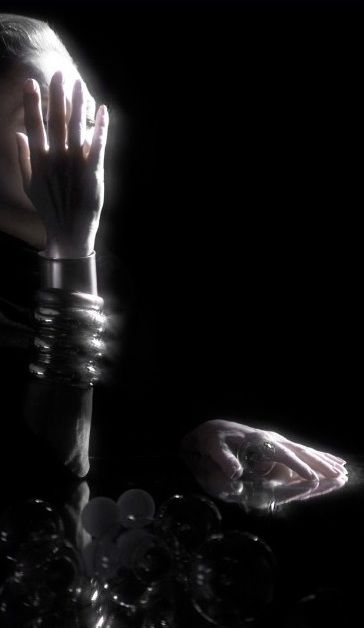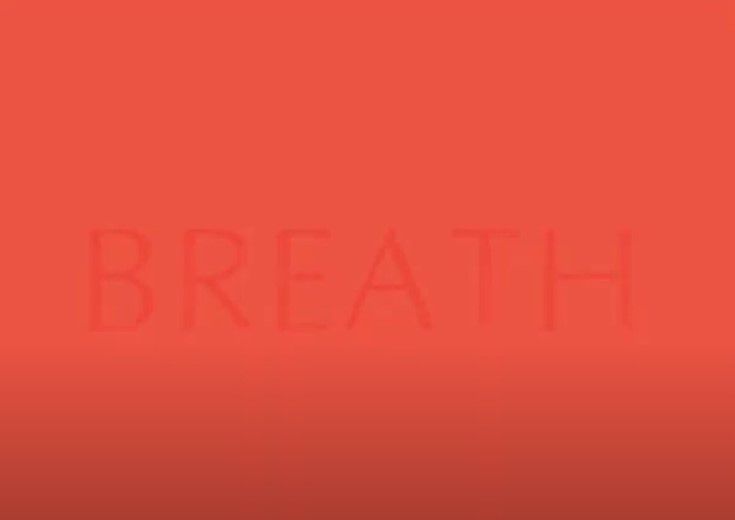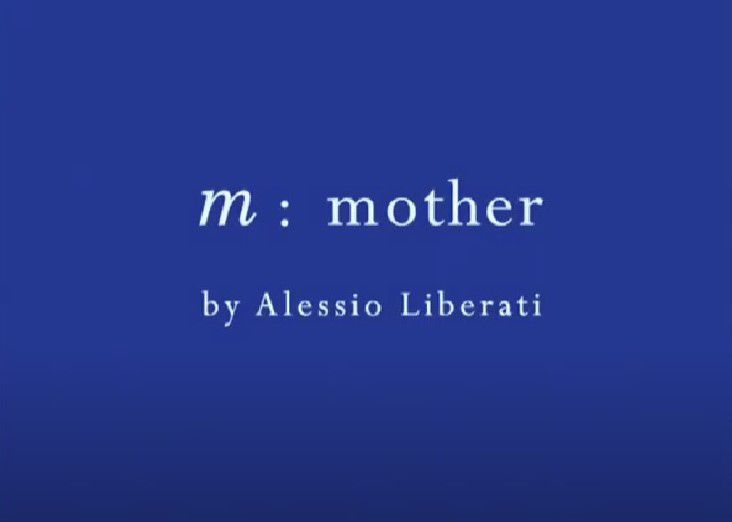VIDEO & DANCE PRODUCTIONS
VOOM PORTRAITS – ROBERT WILSON
Artist and theater director Robert Wilson created a series of video portraits of celebrities, ordinary people and animals called "VOOM Portraits." The name comes from Voom HD Networks, a TV company specializing in high-definition entertainment, which was able to provide the technology Wilson needed to execute his idea. The portraits, created between 2004 and 2009, are a cross between photography, video, literature and sound. The portraits include celebrities, artists, intellectuals, animals, presented on large-scale HD plasma flat-screens, and each work is accompanied by original musical scores.
The portrait of Farah Pahlavi, widow of Mohammad Reza Pahlavi, the Shah of Iran, has music by Popol Vuh ('Aguirre').
(from: liabxl)
Farah Pahlavi - (Imperatrice/Empress), 2006 Music by Popol Vuh


Source: Joshua S. Walden, Musical Portraits: The Composition of Identity in Contemporary and Experimental Music, Oxford Press, 2018, p.114
VIDEO POEMS BY ALESSIO LIBERATI
Alessio Liberati is an Italian writer of visual poetry using various artistic forms: kinetic poems, concrete poems, interactive poems.
‘Breath in Loop’ (2008) is a kinetic poem in video format. For this poem Liberati uses unreleased music from Popol Vuh, as heard in the movie ‘Aguirre, der Zorn Gottes’. [ Listen/See: Youtube ]

‘M: mother’ (2010) is a videopoem dating from 2010. For this Liberati used the piece ‘Why do I still sleep’ [ Listen/See: Youtube ]

***
POPOL VUH IN DANCE PRODUCTIONS
Occasionally the music of Popol Vuh is used for dance productions.
- 1983 - Rachel Brumer - ‘Oryx’
Choreographed and performed by Rachel Brumer.
Music: 1st and 3d sections, by Steve Reich (‘Tehillim’), 2d section, ‘Tantric Songs’ from the Popol Vuh
A videorecording is made on March 19, 1983 at the Washington Hall Performance Gallery, Seattle by Sandra Eshleman and Robert McGinley during an On the Boards presentation.
Source: www.danceheritage.org
*
Review:
The Seattle Times, Friday, February 14, 1992
These `Recent Echoes' Peer Into Wilson's Pscyhe
By Carole Beers
"Recent Echoes from the Stomping Ground," Llory Wilson and Dancers, 8 p.m. today through Sunday, and Feb. 20-23, Broadway Performance Hall (32-DANCE). --------------------------------------------------------------- Llory Wilson last night exorcised demons from her choreographic past, let some pals show off a new duet and trotted out works she's done recently for other companies, including Pacific Northwest Ballet.
The resulting show, "Recent Echoes from the Stomping Ground," was one undimmed stare into Wilson's pragmatically pixilated psyche: Martha Graham does Minnie Mouse.
All the "right" choices are there, from music to dynamics, from showoff bravura dancing to throwaway street moves and even a touch of hip-hop. But so, too, were goofy asides, flip-flops on a sofa to illustrate the ambivalent side of romance and a male pseudo-classical duet that was breathlessly ingenuous. All intelligently interwoven for texture, shape, surprise.
No question: In the 12 years she has danced and made dances in Seattle, Wilson has learned her stuff.
But why is a lot of it forgettable, particularly much of last night's program?
Of her five works, two - "Davenport Memoirs" and the ensemble dance "On Holding On" - had bite and progressive development, which Wilson's pieces need, to keep them from appearing as so many "cute" splashes of paint on canvas.
The latter, for seven dancers in black and white, softly draped costumes, featured Joan Simcoe's transcendent, soaring score commissioned by the Seattle Women's (Vocal) Ensemble. The moves mirrored and amplified the music, breathing as it did, flowing in and out, with arms, bodies and torsos catching and sending back out again other bodies that fell into them.
Wilson's 35-minute solo, "Oryx," to minimalist music of Steve Reich and Popul Vuh, was a long, intimate but not very interesting look at the foundations (and limitations) of Wilson's dance style, as choreographed by Rachel Brumer in 1983.
In this, Wilson dances from the waist to the knees. That is, the incredible strength, spring and flexibility of her hips, lower back and thighs are exercised in every possible way, with kicks, leg lifts, turns, jumps, sprawls, shuffles - you get the idea.
Through all this, in still moments or frenetic ones, her chest and upper back remain stiff, closed, a cipher. Arm and hand movements do not originate deep within her body, but are tacked on, decorative; the arms themselves look weak, the hands, lifeless. No wonder her "Cordate Carcass," depicting how a women with a paralyzed torso might move, was such a success.
"Davenport Memoirs" was the other welcome piece, created last year for Co-Motion, (and danced better by them, with more wit and grit).
The duet, "Familiar," danced by Jennifer Laird, 9, and Theodora Fogarty, was a charming tumble of floor work by adult and child. The themes were trust, sharing of impulses and energy - gentleness.
Friday, February 14, 1992
2. 1987 - Stuart Pimsler - 'Islands'
Choreographer: Stuart Pimsler
Music: Klaus Nomi, Popol Vuh ('Aguirre I')
View at Stuart Pimsler Videos: "islands' and 'Islands (University of Florida)
3.1989 – Chris Kaufman - Desire
Choreography and performance by Chris Kaufman.
Presented by Dance Theater Workshop
Videotaped in performance at Dance Theater Workshop's Bessie Schonberg Theater, New York, as part of the Fall Events, Split Stream, on October 21, 1989, by Video D Studios.
Cassette 1
Luckless pedestrian (ca. 14 min.) / music, Tom Waits. His (ca. 8 min.) / music, Bobby Previte ; text, from Frederick Wiseman's documentary Deaf and Blind. Desire borne (ca. 8 min.) / music, Popol Vuh.
Cassette 2
Up from under (ca. 32 min.) / [part] 1, music, Special EFX ; [part] 2, music, Aram Khachaturian (from Gayane ballet suite) ; [part] 3, music, Jane Kaufman (Berlin meets the Idaho wall) ; [part] 4 titled Overs, no music credit.
Source: www.danceheritage.org
*
Review:
New York Times, October 26, 1989
By Jack Anderson
Strength expressed weakness and weakness revealed unexpected strength on Monday night at the Bessie Schonberg Theater. Chris Kaufman - a dancer of remarkable authority - offered a program of solos about social misfits. Yet some of her unfortunates proved quietly defiant.
Strength expressed weakness and weakness revealed unexpected strength on Monday night at the Bessie Schonberg Theater. Chris Kaufman - a dancer of remarkable authority - offered a program of solos about social misfits. Yet some of her unfortunates proved quietly defiant.
Although ''Luckless Pedestrian,'' to gritty recorded songs by Tom Waits, included struts and kicks, the character Ms. Kaufman portrayed was obviously weary. Ms. Kaufman, who is thin and short-haired, made it possible to wonder if this person was male or female. But it was clearly someone who believed that if one stopped moving one might also stop living.
Ms. Kaufman wore a long hood in ''His.'' At times, its ends dangled behind her like a cape. She also imprisoned herself in the garment's folds as if it were a straitjacket. That seemed appropriate for this dance of trembling to ominous music by Bobby Previte and the sound of a quavery voice reciting a not always comprehensible text by Fred Wiseman about problems of a mother and a son.
Crawling across the floor to music by Popol Vuh in ''Desire Borne,'' Ms. Kaufman twisted into such contorted positions that she no longer looked human. After attempting to rise, she gasped. Nevertheless, she did manage to rise.
In ''Up From Under,'' a suite of sketches, the characters ranged from a sad faded beauty who might have stepped from a play by Tennessee Williams to a woman who struck erotic poses as if she were an entertainer in a brothel. But the work ended with a struggle to escape oppression.
Some of the solos could be more concise, for compositional tightness would prevent Ms. Kaufman from inadvertently suggesting that she is using social ills merely as a pretext for ingenious movement. That surely must be the last impression she wishes to convey.
Her concern for the underdog and her magnetic stage presence are equally admirable. Given her expertise, it would also be interesting to see Ms. Kaufman in solos created for her by other choreographers and in revivals of important solos from the modern-dance repertory.
4. 1990 - Introdans – Raspoetin
Premiered september 28th 1990, Studiotheater Introdans, Arnhem
Choreagraphy by Ton Wiggers
Written by Hans Focking
Music: Ludwig Minkus, Riccardo Drigo, Anton Rubinstein, Jo Knumann, Sergei Rachmaninov, Frank Farian, Pink Floyd, Charles Gounod, Popol Vuh, Hans Focking, Pjotr Iljitsj Tsjaikovski
Source: https://theaterencyclopedie.nl/wiki/Raspoetin_-_Introdans_-_1990-09-28
